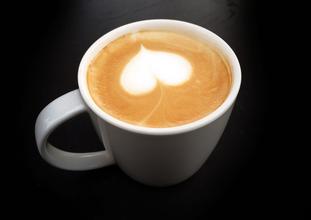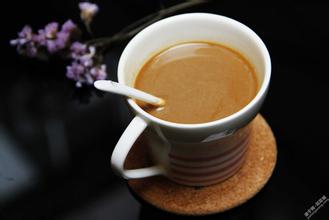Description of characteristics and Flavor of Hawaiian Coffee beans with strong taste introduction of Grinding degree in producing areas
Hawaii's most famous coffee bean and coffee producing area is Kona kona, which is located in the southwest of the Big Island, 20 miles long and 2 miles wide, covering the slopes of Hualalai and Mauna Loa. Only coffee beans grown in this area and subject to the most stringent certification standards can be sold under the trademark Kona. Today, about 100 farms have produced coffee beans that meet these standards, and more and more farms are expected to follow suit in the future. The Hawaiian islands have long been recognized as a paradise on earth. After nearly two centuries of efforts to grow coffee, the term Kona kona has almost equated with quality. Although all the islands in Hawaii have coffee trees grown for commercial purposes, the Big Island has the largest number of coffee farms, about 650 farms, but these coffee farms are relatively small. With a total of less than 2000 acres of planted woodland, there are only 25 coffee plantations operating on the islands of Maui, Molokai, Oahu and Kauai, but they are much larger and produce more than three times as much as the Big Island. Surprisingly, Kauai Island has the largest coffee-growing area of any island, with more than 4000 acres, but all are managed by the same operator, while Molokai Island has only 550 acres of coffee-growing land, with even fewer Maui and Oahu. Most Hawaiian coffee farmers still pick fresh coffee cherries to sell today, but in recent years more and more people are committed to adding value to their coffee bean products, so most of them go to their own post-processing, drying, grinding and baking their own coffee beans.
The characteristics of coffee beans mentioned earlier that the taste of Kona coffee beans is very good, and the appearance of coffee beans is also very good, not only has full fruit, but also has a beautiful luster, if you want to give the world's coffee beans beauty pageant, Kona coffee beans is undoubtedly the first place. The coffee made from Kona coffee beans has a strong flavor, with aromas of nuts and cinnamon, and moderate acidity, which makes it impossible to pick out shortcomings. The growing environment of coffee beans Kona coffee beans grow on a volcano in Hawaii, not on the top, of course, but on slopes. If the taste of Kona coffee is similar to anything, it is Central American coffee, which is not very high in texture, but it is very sour and rich in taste. When Kona coffee is just made, it is very fragrant, so the average quality of Kona coffee is very high. If you can't get used to the sour taste of African coffee and the taste of other coffee, then you can try it. This fresh coffee may be to your taste. The sun and precipitation in Hawaii are favorable for coffee cultivation, and Hawaii is located in the tropics, where there are occasional tornadoes, but there is no frost, so it is very suitable for the growth of Kona coffee beans. no wonder the coffee here is so delicious. There are not many rare Kona coffee in the world, and you will be lucky if you can taste the purest Kona coffee. In fact, Kona coffee has become a treasure, not only because of its small quantity, but also because of its high quality, which has a lot to do with the strict coffee industry in Hawaii. Because Hawaii has high requirements for coffee production, they can be said to have the highest level of quality. In fact, even Kona coffee has a hierarchical system, which has a total of three levels, namely, No. 1 coffee, good coffee, and very good coffee. Few of the Kona coffee sold in the world today are real Hawaiian Kona coffee. In fact, in addition to Kona coffee, another kind of coffee is Kaj Farm Coffee in Hawaii, which is also a very good coffee. The coffee produced in Hawaii will make everyone feel the real taste of Hawaii. So I hope you don't forget to taste the authentic coffee here. They won't let you down. Hawaiian tourist coffee brings you different enjoyment.

Important Notice :
前街咖啡 FrontStreet Coffee has moved to new addredd:
FrontStreet Coffee Address: 315,Donghua East Road,GuangZhou
Tel:020 38364473
- Prev

Introduction to the characteristics of taste varieties produced by the grindability treatment of Colombian coffee with rich aroma
The pure taste of Colombian coffee comes from Colombia's natural environment with the most favorable conditions for coffee growth. But beyond that, it is inseparable from the hard work of local growers. In Colombia, coffee cultivation has reached 1.07 million hectares, there are about 302000 coffee plantations in the country, and 30 to 40 per cent of the rural population depends directly on coffee production. Columby
- Next

High quality Costa Rican coffee grindness flavor description method roasting degree characteristics of manor production
High-quality Costa Rican coffee is called extra hard beans, and this kind of coffee can grow at an altitude of more than 1500 meters. Altitude has always been a problem for coffee growers. The higher the altitude, the better the coffee beans, not only because the higher altitude can increase the acidity of the coffee beans and thus increase the flavor, but also because the night temperature at the higher altitude is lower, which makes the trees grow slowly.
Related
- Detailed explanation of Jadeite planting Land in Panamanian Jadeite Manor introduction to the grading system of Jadeite competitive bidding, Red bid, Green bid and Rose Summer
- Story of Coffee planting in Brenka region of Costa Rica Stonehenge Manor anaerobic heavy honey treatment of flavor mouth
- What's on the barrel of Blue Mountain Coffee beans?
- Can American coffee also pull flowers? How to use hot American style to pull out a good-looking pattern?
- Can you make a cold extract with coffee beans? What is the right proportion for cold-extracted coffee formula?
- Indonesian PWN Gold Mandrine Coffee Origin Features Flavor How to Chong? Mandolin coffee is American.
- A brief introduction to the flavor characteristics of Brazilian yellow bourbon coffee beans
- What is the effect of different water quality on the flavor of cold-extracted coffee? What kind of water is best for brewing coffee?
- Why do you think of Rose Summer whenever you mention Panamanian coffee?
- Introduction to the characteristics of authentic blue mountain coffee bean producing areas? What is the CIB Coffee Authority in Jamaica?

